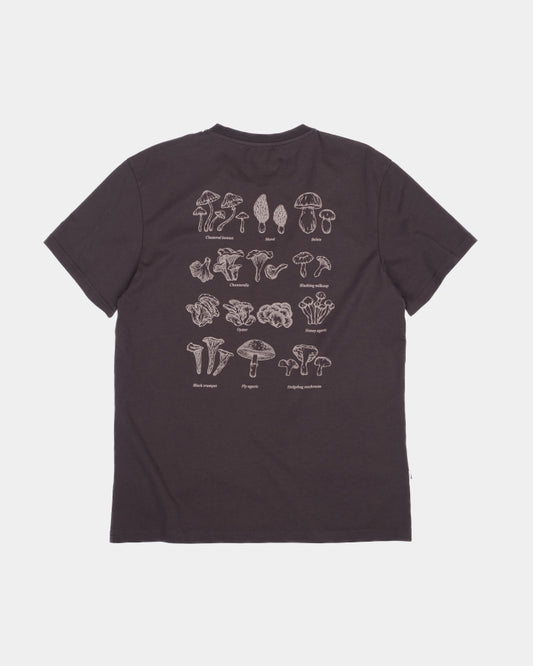Is New York the first place you think of when you think of ancient forests? As of now, yes, because a fossil of the oldest forest on Earth was recently discovered in an abandoned quarry in Cairo, New York.
Is New York the first place you think of when you think of ancient forests? As of now, yes, because a fossil of the oldest forest on Earth was recently discovered in an abandoned quarry in Cairo, New York.
Source: Charles ver Straeten
The forest is believed to be around 386 million years old, several million years older than the oldest known forest to date, which interestingly is also found in New York.
Why is this discovery significant?
It suggests that modern plants evolved earlier than previously thought and therefore had a longer impact on the Earth's climate and ecology. Scientists are incredibly meticulous when it comes to reconstructing history from the Earth's fossil record, but this is only the third forest from the Middle Devonian period, and the new discovery means that some Paleozoic timelines need to be updated.
A walk down the prehistoric memory lane
Finding well-preserved fossils from long-gone root systems is basically the holy grail of being a palaeobotanist, but the real attraction for the everyday nature lover is the opportunity to look back and marvel at how our terrestrial world came to be - and how important trees were in that evolutionary story.
We all know that life on Earth began in the sea, and the same is true for plants. The first plants began to colonise the land about 430 million years ago, but it took some time for them to evolve and become complex. Things like the development of vascular tissue, roots and the ability to reproduce by seed were the crucial steps in evolution, not only for the development of what we know today as trees, but also for the creation of soil and the simultaneous evolution of insects, vertebrates and other organisms that depended on these plants.
Biodiversity did not just appear fully formed in some great doorway of creation, but happened very slowly over millions of years, literally starting from single cells and learning to become something bigger in one tiny step (see also the diagram below from bottom to top to follow the evolution of plants).
Source: OneTreePlanted
The evolutionary cradle of the Devonian and Carboniferous periods
The newly discovered fossil forest dates from the Middle Devonian, which lasted from 416 million to 358 million years ago, and is the fourth period of the Palaeozoic Era. It came before the better-known Carboniferous period, when huge trees and forests dominated the landscape, increasing atmospheric oxygen from 21% to 35% (which also led to large insects and amphibians), while reducing and sequestering large amounts of carbon to create the coal we have used as fuel ever since.
The lesser known but essential precursor to all these climate-changing forests, the Devonian, is the time when plants really began to form the first forests on Earth, consisting of lycophytes, horsetails and ferns. The Devonian is when Archaeopteris, also known as the first successful trees, finally developed - with a softwood trunk on which successive rings grew. The new fossils show that Archaeopteris evolved about 2-3 million years earlier than previously thought and therefore had a longer impact on Earth's ecology, geochemical cycles and atmosphere.
Another specimen in the new discovery is still a little unclear, but scientists believe it may belong to the class of Lycopodium - the direct ancestors of all those carbon-sucking trees of the Carboniferous.
What we know about the primeval forest is that there were no birds or large animals yet, only primitive insects, and that the trees had fern-like fronds instead of leaves or needles, giving them a hair-like appearance.
Fossil roots from Cairo, New York. Source: William Stein & Christopher Berry
The value of today's 360° perspective
A few million years may not seem like much in the grand scheme of Earth's history, but it is very significant in how scientists explain the evolution of trees and their long-term impact on our world. It means that the environmental changes that occurred were the result of a longer, slower process.
There is always more to learn for anyone who likes to study trees, but we now have the privilege of millions of years of collective science and data to enlighten us loud and clear about the most important point here: Our planet is extraordinary, and plants are the key to life! We also know that humans can and do influence the biosphere, and that an abundance of trees can cool the atmosphere.
Reforestation does not replace the need to reduce the burning of fossil fuels, but it can definitely have a positive and balancing effect on our climate, so plant a tree today to have a positive impact.
© This blog was researched, written and published by our partner organisation OneTreePlanted. The content has been adopted and translated by NIKIN. The blog may contain some deviations from the original. The original blog and further information can be found at www.onetreeplanted.org. Since 2016, we have been working with the renowned non-profit organisation - so far we have been able to plant over 450,000 trees in various places around the world.























